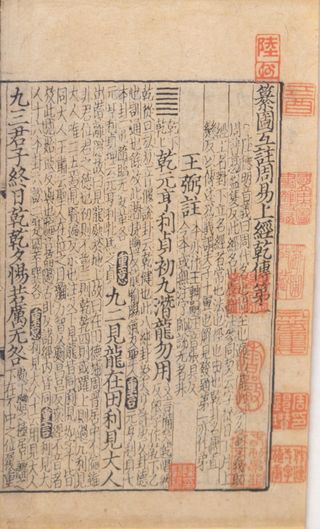Relationships
I Ching: Intentional Meaningful Coincidences
Toss the coins and see the future?
Posted June 16, 2017

The I Ching, also known as the Book of Changes, is humanity’s oldest oracle. It is regularly consulted on matters relating to business, relationships, politics and other aspects of life. It is the pre-eminent book among the six Confucian Classics. The I Ching influenced the development of various Chinese philosophical systems, including Taoism, Confucianism, and the Yin-Yang School.
Throwing the coins of the I Ching intentionally creates coincidences between the mind of the asker and the pages in the book. Like all mantic methods, it is intended to clarify the present and predict the future. The I Ching originated within the worldview of ancient China in which the spiritual aspect of reality was accorded equal importance to the physical and psychic aspects. (Main, p. 142). It is based on the idea that events "fall together in time". Its readings then reflect the current state of now. The readings symbolically mirror what is going on in the present.
Using the I Ching is a form of bibliomancy, the random selection of passages from a sacred book. The I Ching is a collection of sixty-four, six-line figures "hexagrams" with each figure having a name which is elaborated upon in its accompanying text.
The website DecisionPointIChing.com, and its blogs show how the wisdom of the I Ching can be elicited to comment on political and cultural activities as well as personal decision making. To learn more about the I Ching please visit this website, and listen to its creator Mary Kay Landon discussing it with me here.
Landon recommends these 4 books:
The I Ching, or Book of Changes. (1950/1967). (R. Wilhelm & C.F. Baynes, trans.). Princeton, NJ: Princeton University Press. Arguably the first authoritative translation of the I Ching into English, this version includes famed Swiss psychiatrist Carl G. Jung’s Foreword in which he discusses—and demonstrates—how the I Ching provides an example of his theory of synchronicity. This translation is also notable in that it includes a complete translation of “The Ten Wings,” Confucius-era philosophical commentaries on the images and meanings associated with the much older basic text.
Wing, R. L. The Illustrated I Ching. (1982). Garden City, NY: Dolphin Books (Doubleday & Co., Inc.). The companion volume to the author’s The I Ching Workbook, it offers an accessible, plain-language description of the meaning of the hexagrams and provides a simplified coin method for consulting the oracle. As such, it serves as a suitable and faithful introduction to the I Ching. The explanation for each hexagram is also accompanied by a Chinese illustration that depicts its meaning. Line text descriptions do not include translations of the original text.
Karcher, Stephen. The I Ching: The Classic Chinese Oracle of Change. The First Complete Translation with Concordance. (2002). London: Vega. This translation offers multiple direct translations for each character appearing in the ancient Chinese text (i.e., “concordance”) along with author commentaries on the hexagrams and most of the line texts. As such, it offers the experienced practitioner a choice of interpretations on both the hexagrams and line texts, which can provide additional insights into unclear readings. Not recommended for beginners.
Huang, Alfred. The Complete I Ching. (1998). Rochester, VT: Inner Traditions. This is Mary Kay’s favorite translation at this point because it offers a Chinese perspective on the judgments of the hexagrams and line texts, as well as in its descriptions of the meanings of the Chinese ideograph for each hexagram. These ideographs offer another layer of meaning and insight into this ancient oracle. The author’s clear language and presentation of the material makes this also an appropriate translation for thoughtful beginners.
References
Main, R. (2007) The Revelations of Chance. Albany, NY: SUNY


